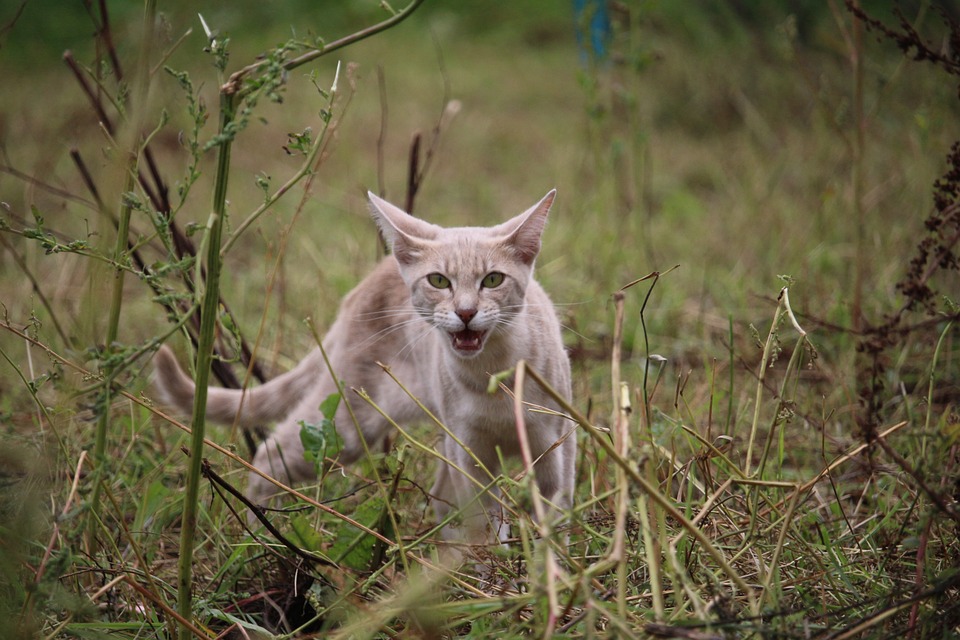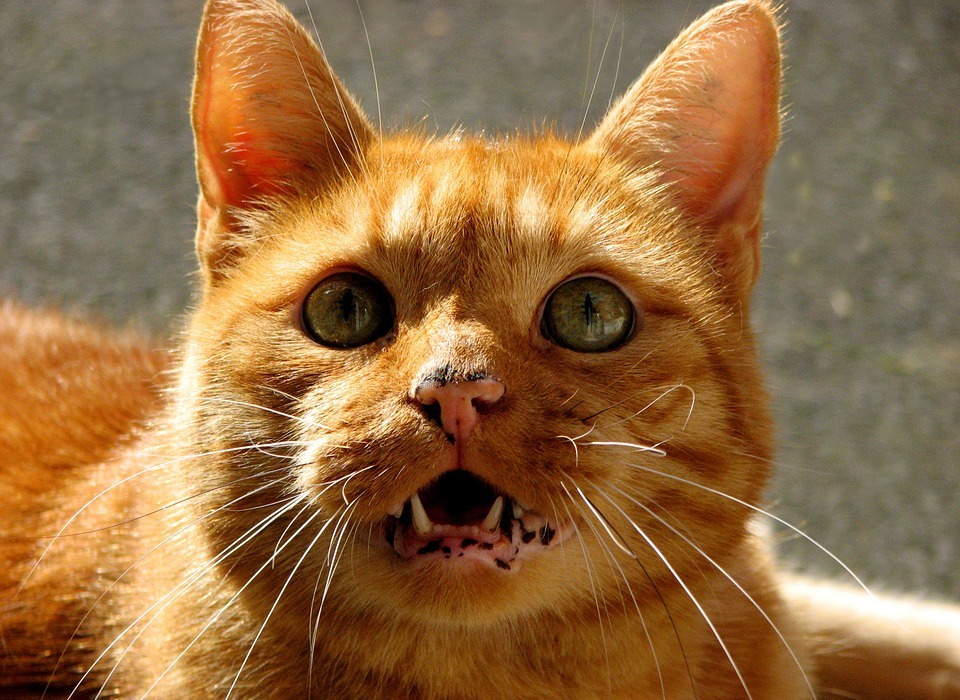This comprehensive guide delves into the world of feline parvovirus, providing a detailed understanding of this potentially serious health concern for cats. We'll explore the virus's nature, how it spreads, the signs to watch for, and the vital steps owners can take to protect their feline companions.
Part 1: Uncovering the Nature of Parvoviruses

1.1. The Parvovirus Family: A Global Threat
Parvoviruses belong to a family of small, hardy viruses that can persist in the environment for extended periods. They lack an outer envelope, making them highly resistant to harsh conditions and common disinfectants. This resilience poses a significant challenge in controlling their spread.
1.2. Targeting Rapidly Dividing Cells: A Devastating Strategy
Parvoviruses have a predilection for rapidly dividing cells, primarily targeting the intestinal lining, bone marrow, and developing tissues. This targeting strategy explains the devastating effects parvoviruses can have on young animals, whose bodies are undergoing rapid growth.
1.3. The Distinction Between Feline and Canine Parvovirus
While both feline panleukopenia virus (FPV) and canine parvovirus (CPV) belong to the same family, they are distinct viruses with specific host ranges. FPV infects cats, while CPV primarily affects dogs. It is important to understand that these viruses are not interchangeable; dogs cannot contract FPV, and cats cannot contract CPV.
Part 2: Transmission and Risk Factors: Understanding How FPV Spreads

2.1. Direct Contact: The Primary Transmission Route
FPV primarily spreads through direct contact with an infected cat. This can occur through sneezing, coughing, sharing food and water bowls, or even just close physical contact.
2.2. Fecal-Oral Route: The Silent Spread
The virus can also be transmitted through contaminated faeces, vomit, or even environmental surfaces where infected cats have been. This fecal-oral route is a common way for the virus to spread, as infected cats can shed large amounts of virus in their faeces.
2.3. The Vulnerable: Recognizing High-Risk Cats
Kittens are especially vulnerable to FPV due to their underdeveloped immune systems. They may not have received complete vaccination protection and are more susceptible to severe illness. Unvaccinated cats, regardless of age, are also at high risk of infection.
2.4. Other Risk Factors: Enhancing Awareness
Several factors can increase a cat's risk of contracting FPV. These include:
- Living in crowded or multi-cat environments, where exposure to infected cats is more likely.
- Being exposed to contaminated environments, such as shelters, kennels, or areas frequented by stray or feral cats.
- Having a weakened immune system due to stress, malnutrition, or underlying medical conditions.
Part 3: Recognizing the Symptoms: A Guide to Early Detection

3.1. Early Signs: Subtle Hints of Infection
Early symptoms of FPV can be subtle, making it crucial for owners to pay close attention to their cat's behaviour and health. Initial signs may include:
- Lethargy: Noticeable decrease in energy and activity levels.
- Loss of Appetite: A marked change in feeding habits, with the cat showing disinterest in food.
- Vomiting: Occasional vomiting may occur, especially in the early stages.
- Diarrhoea: Soft or watery stools, potentially with a foul odour.
- Fever: Elevated body temperature, which can be detected with a rectal thermometer.
3.2. Progression of Symptoms: When to Seek Immediate Veterinary Care
As the infection progresses, symptoms can become more severe and life-threatening. These may include:
- Dehydration: Dry gums, sunken eyes, and decreased skin elasticity are signs of dehydration, a serious complication of FPV.
- Weakness: Increased lethargy and inability to stand or walk.
- Weight Loss: A rapid decrease in body weight due to loss of appetite and impaired digestion.
- Enteritis: Inflammation of the intestinal lining, leading to severe diarrhoea, abdominal pain, and possible blood in the stool.
- Bleeding Problems: Due to bone marrow suppression, the virus can impair the body's ability to produce platelets, leading to bruising, nosebleeds, and potential internal bleeding.
- Neurological Signs: In some cases, FPV can affect the nervous system, causing tremors, seizures, and even paralysis.
Part 4: Diagnosis and Treatment: A Collaborative Approach
4.1. Diagnosing FPV: Confirming the Suspicion
Diagnosing FPV typically involves a multi-faceted approach:
- History and Physical Examination: A detailed history of the cat's symptoms, vaccination status, and potential exposures is crucial. A thorough physical examination helps identify signs of dehydration, weight loss, and other abnormalities.
- Blood Tests: Complete blood count (CBC) is essential to evaluate white blood cell count. Panleukopenia, a decrease in white blood cells, is a characteristic finding in FPV infection.
- Faecal Analysis: Examining the stool for the presence of FPV virus can help confirm the diagnosis.
- PCR (Polymerase Chain Reaction) Tests: This highly sensitive test detects the presence of viral DNA in blood or faecal samples, providing definitive confirmation of FPV infection.
4.2. Treatment Options: Providing Supportive Care
Treatment for FPV is primarily supportive, focusing on managing symptoms and maintaining the cat's overall health:
- Intravenous Fluids: Essential to correct dehydration and restore electrolyte balance.
- Antibiotics: Prescribed to prevent secondary bacterial infections, which can complicate the illness.
- Anti-Emetics: Administered to reduce vomiting and allow for better hydration and nutrition.
- Nutritional Support: Intravenous or tube feeding may be necessary if the cat is unable to eat adequately.
- Antiviral Medications: While there are no specific antiviral medications for FPV, some medications may have a supportive role in managing the illness.
4.3. Prognosis: Assessing the Outcome
The prognosis for FPV depends on several factors:
- Age of the Cat: Kittens are at higher risk of complications and mortality.
- Severity of Illness: The severity of symptoms at presentation can influence the outcome.
- Promptness of Treatment: Early intervention and aggressive supportive care improve chances of survival.
- Overall Health Status: Cats with pre-existing medical conditions or weakened immune systems may have a more challenging recovery.
Part 5: Prevention: Taking Charge of Your Cat's Health
5.1. Vaccination: The Cornerstone of Protection
Vaccination is the most effective way to prevent FPV infection. The FPV vaccine is part of the core feline vaccination series, usually administered as a combination vaccine with other essential feline immunizations.
5.2. Vaccination Schedule: Following the Recommended Guidelines
The recommended vaccination schedule for kittens typically includes:
- Initial series: A series of two to three vaccinations, starting around 6-8 weeks of age.
- Booster: A booster vaccination given a year after the initial series, and then every one to three years, depending on the specific vaccine and your veterinarian's recommendations.
5.3. Maintaining Hygiene: Minimizing Exposure
Good hygiene practices are essential to reduce the risk of FPV transmission:
- Handwashing: Thorough handwashing with soap and water after handling cats, cleaning litter boxes, or touching contaminated surfaces.
- Disinfection: Using bleach or other appropriate disinfectants to clean contaminated surfaces, such as food and water bowls, toys, bedding, and litter boxes.
- Environmental Cleanliness: Keeping the cat's living environment clean and free of potential sources of contamination.
Part 6: Importance of Isolation: Protecting Other Cats
If a cat is suspected of having FPV, prompt isolation is crucial to prevent the spread of the virus:
- Separate Room: Confine the infected cat to a separate room, avoiding contact with other cats.
- Dedicated Supplies: Use separate food and water bowls, bedding, litter boxes, and toys for the infected cat.
- Minimize Contact: Limit contact with the infected cat to essential care, and wear gloves when handling.
Part 7: Understanding the Virus's Impact: A Deeper Look
7.1. Effects on the Digestive System: Impaired Digestion and Absorption
FPV's attack on the intestinal lining can lead to severe diarrhoea, vomiting, and impaired nutrient absorption. This can cause dehydration, electrolyte imbalances, and malnutrition.
7.2. Impact on the Immune System: Weakened Defences
The virus's suppression of bone marrow function results in panleukopenia, a decrease in white blood cells. This leaves the cat highly vulnerable to secondary bacterial infections.
7.3. Neurological Manifestations: The Potential for Neurological Complications
In some cases, FPV can directly affect the central nervous system, leading to tremors, seizures, ataxia (incoordination), and paralysis.
Part 8: FAQs: Addressing Common Concerns
8.1. Can a Vaccinated Cat Get FPV?
While vaccination offers significant protection, it does not guarantee complete immunity. A vaccinated cat may still contract the virus but typically experiences a milder form of the disease and is more likely to recover.
8.2. How Long Is a Cat Contagious With FPV?
Cats can shed the FPV virus for several weeks after infection, even if they appear healthy. This underscores the importance of isolation and rigorous hygiene practices.
8.3. Can Humans Get FPV?
No, FPV is a feline-specific virus and cannot infect humans. However, humans can act as carriers of the virus, inadvertently spreading it to other cats through contaminated surfaces.
8.4. How Long Does FPV Survive in the Environment?
FPV can survive for months in the environment, emphasizing the need for thorough disinfection of contaminated surfaces.
8.5. Can I Use a Shared Litter Box for Multiple Cats if One is Infected With FPV?
It is strongly advised against using shared litter boxes if one cat is infected with FPV. Shared litter boxes provide a readily available pathway for the virus to spread.
8.6. What Are the Long-Term Effects of FPV?
While most cats recover fully from FPV, some may experience lingering effects, such as chronic digestive issues, immune system dysfunction, or neurological complications.
8.7. What Should I Do If I Suspect My Cat Has FPV?
Contact your veterinarian immediately. Prompt diagnosis and treatment are crucial for a positive outcome.
By understanding the risks, symptoms, and preventative measures associated with FPV, cat owners can take proactive steps to safeguard their feline companions. Early detection, appropriate treatment, and consistent preventative measures are essential in ensuring the health and well-being of cats.
Everyone is watching

Are Cat Ribs Flexible? Understanding Their Anatomy
CATS & KITTENSThis article delves into the fascinating world of feline anatomy, exploring the flexibility of cat ribs and ho...

Can Cats Eat Bananas? (Everything You Need to Know)
CATS & KITTENSThis article dives into the intriguing question of whether cats can safely enjoy the sweet, yellow fruit, bana...

Cat Lifespan: How Long Do Cats Live?
CATS & KITTENSThis comprehensive guide explores the factors influencing the lifespan of our feline companions, providing ins...

Can Cats Get COVID-19? What You Need to Know
CATS & KITTENSThis article will delve into the fascinating world of feline COVID-19 susceptibility. We'll explore whether ca...

Can Cats Eat Eggs? A Complete Guide to Egg Safety for Your Feline Friend
CATS & KITTENSWhen it comes to treating our furry companions, we all want to ensure we're doing what's best for them. Eggs...
